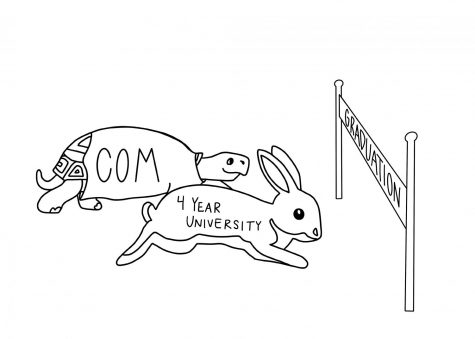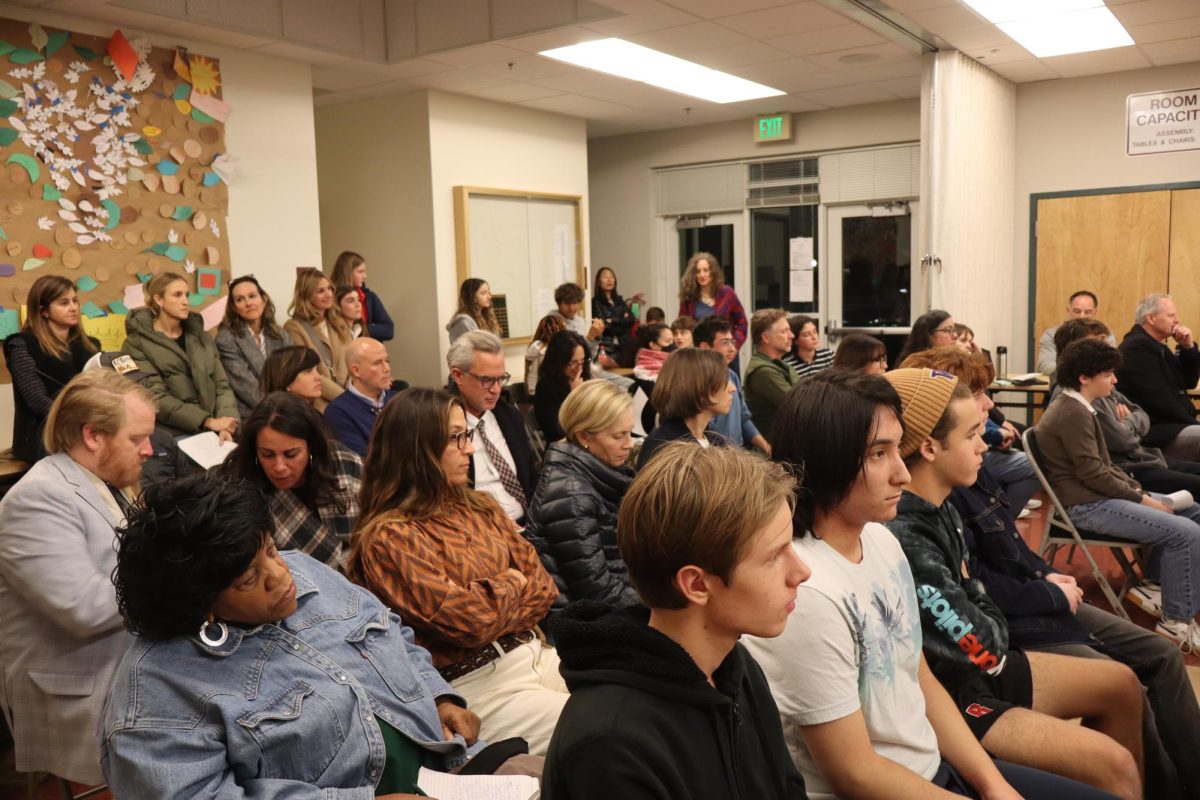The COMmon misconceptions of community college
June 8, 2021
As a high school student in the second semester of my junior year, life after high school always seems to be the center of attention. The question of “What colleges are you thinking about?” is starting to become a daily occurrence, however, I have never been asked simply what my plans are for after high school.
This illustrates the assumption that a four-year university is not only the common path but evidently the only respected path. This idea, and the further perception that a four-year university is the best track towards success, contradicts the level of education and opportunities that community colleges, specifically College of Marin (COM), provide. Going to community college for the first two years of one’s higher education should not be viewed as inferior to attending a four-year university due to the price, flexibility, transitional period and employment opportunities.
According to Academic Influence, as of March 4, COM was rated the number one community college in California and ranked number five out of the 839 community colleges in the country. The fact that COM is so highly acknowledged should be a clear sign to high school students that they would receive an effective education; COM should not be seen as a school for less academic students.
Eva Geitheim, a 2019 Redwood graduate, has been attending COM for the past two years and recently got accepted into the University of California, Los Angeles (UCLA) which she will transfer into in the fall. She explains that even though COM is highly rated, the negative perceptions of community college from Redwood students degrade the option of attending one.
“I remember my first couple of years [of high school] knowing that I didn’t want to go straight to a four-year university, but at the same time, [I didn’t consider] COM because I felt like community college was a lesser route, even though it’s actually really beneficial,” Geitheim said.
According to Geitheim, this idea is common at Redwood. Going to a four-year university is perceived as receiving a higher education, so, oftentimes, the level of academic excellence at COM is overlooked.
“The amount of teachers we have at COM who have PhDs or are super good at teaching their subject or well-versed is astounding,” Geitheim said. “A lot of them actually prefer teaching at community colleges. You’re not getting any less of an education, if anything, you’re just getting more help and attention for less money.”
According to a report conducted by educationdata, a student living on campus for a four year public in-state university is averaged at $25,864 per year, which stands in great contrast to COM’s yearly tuition of $1,494 for in-state students. This difference in price, even for just two years, can have substantial benefits for students trying to save money. Paired with the flexibility of community college scheduling, students are given the opportunity to find wage-earning jobs, furthering their monetary independence and time management. According to U.S. News, approximately 60 percent of students attending community college go part-time, which opens up extra time for students to earn money and provide for themselves, saving for when they move away from home.
Despite the clear positive effects of community college regarding tuition and flexibility, the main downside for many students would be the lack of a “college experience.” According to the ESCOM club listing for COM, there is an underwhelming amount of options to interact with peers with only about a dozen clubs, while four-year universities, like UCLA, offer over 1,000 clubs, providing ample opportunities for school spirit. While the lack of campus life and spirit is disappointing, after two years at the school, the majority of community college students transfer to a larger university, where they would be able to take part in those experiences. Supported by UCLA’s transfer admit data for 2020, 93 percent of transfer students were from community colleges with a 24 percent acceptance rate, showing the common opportunity of transferring.
These downfalls are where the negative perceptions of community colleges set in. Many students are set on experiencing the traditional four-year college experience once they graduate high school, yet failing to get accepted into top schools can be disappointing.

Venkates Swaminathan, the founder and CEO of LifeLaunchr, an online college planning and coaching service, explains that students attending community college for two years have a much higher chance of getting into a school in the University of California (UC) system than they would if they applied right after high school. College of Marin has a Transfer Admission Guarantee (TAG) program that automatically ensures acceptance into six of the UC schools. Through the attainable requirement of 30 UC transferable courses, this program provides the reassuring option of attending a UC after going to COM for two years. Students who go to community college for two years and then transfer to a UC and students who go straight to a four-year university both graduate at the same time with the same credentials, showing that where they started doesn’t really have a long-term impact.
Students must be aware that community colleges are a valid choice and allow them to transfer into top schools after two years, having a higher chance of getting accepted. Community college can allow students to take the time to become independent at their own pace and really figure out who they are and where they want to be after high school. With this in mind, Redwood should work towards not only accepting community college as an option, but also advertising the beneficial outcomes of attending community college, and this could be done through recommending community colleges for college lists and valuable options.







